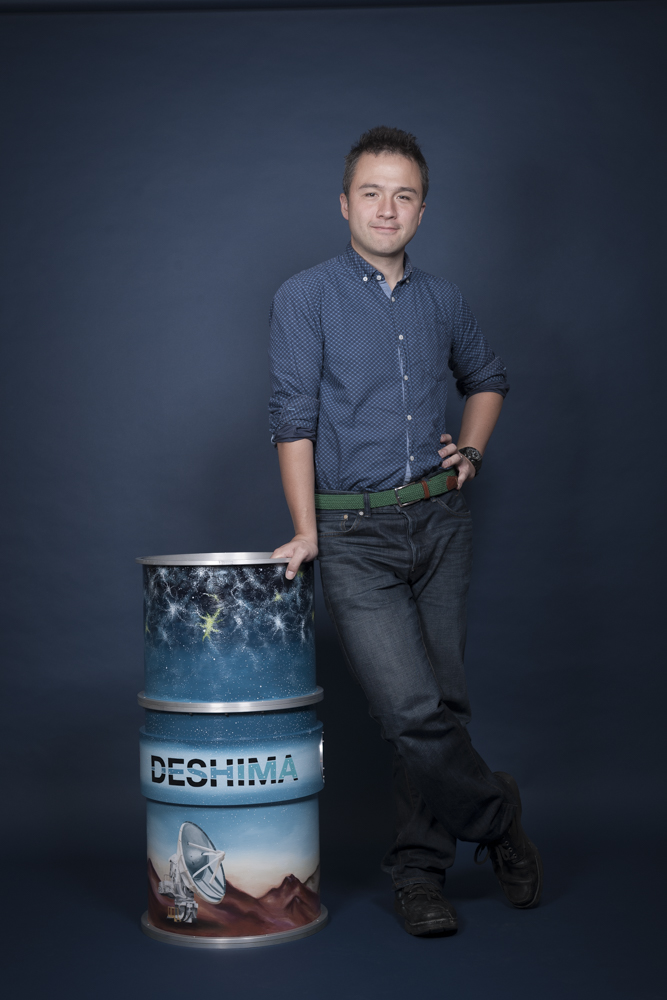‘We could discover something that could change our whole view of the universe’
Astronomer Dr Akira Endo is working on a brand-new measuring instrument that should lead to great improvements in how astronomers study the most active galaxies.
This new spectrometer, named DESHIMA, could give us insights into the origins of stars and galaxies. We talked to this ambitious Japanese scientist from the Tera-Hertz Sensing research group at the Faculty of EEMCS about key moments in his scientific career.
Dr Akira Endo (b. 1981) talks animatedly about his work. Endo: “I want to make a significant contribution to the way in which we look at the universe. I have the feeling that we’re working on something that’s incredibly fundamental – that we could discover something that could change our whole view of the universe.
Some theorists say that they know how the universe was created, but we’re experimentalists; we want to see it, we want proof. It’s difficult for us to study the most active galaxies in the history of the universe, but I think that it’s precisely the development of these galaxies that could teach us a great deal. With 3D mapping of submillimetre galaxies such as these, we hope that we will see completely new phenomena.”
The ultimate origins of the universe
Our conversation takes place just after the first Nobel Prize-winners have been announced. This prompts me to ask: if they discover something spectacular, will it be potential Nobel Prize-winning material? “If we discover something really new, something that revolutionises current theories of the universe, then anything might happen.
Around half the Nobel Prizes for astronomy have had something to do with new instruments; but it really depends on what we see. Rather than being interested in ego or status, he’s driven by curiosity.
“We’re taking a look at the ultimate origins of the universe and searching for answers to such fundamental questions as why are we here, where do we come from?” He says, laughing: “It’s a good thing that I’m pretty persistent. Research like this takes an awfully long time. You devote a major part of your life to it, while the outcome is extremely uncertain. So you’re only able to keep going if you’re motivated by curiosity.”
The ultimate goal of the research
The ultimate goal is to create 3D maps of so-called submillimetre galaxies that, in contrast to 2D maps, also show distance and time. Although submillimetre galaxies are the most active star systems, we have difficulty studying them using traditional telescopes because they produce a large amount of dust.
The research is focusing on the period from when the universe was a sixth of the way through its history, up until roughly half-way through its history. This was the time at which the galaxies and their stars were at their most active. The developments in such systems can be investigated by studying protons and terahertz waves.
What is a spectrometer?
A spectrometer is an essential part of a telescope: it is an instrument that describes the light that has been captured. The spectrometer that Akira Endo is working on with his colleague Jochem Baselmans uses superconductivity to measure the age of photons (in other words, the light that a telescope captures).
If you know the age of the light that is produced by celestial bodies, then you also know the distance between the celestial bodies themselves and between the celestial bodies and the earth. Endo and Baselmans called their spectrometer DESHIMA. This is also the name of an artificial island in Japan, where the Dutch VOC traded with the Japanese from the 17th till 19th century.
What makes the deshima spectrometer even more special?
One of the advantages of using superconductivity is that the spectrometer can be made a lot smaller. This one will soon fit on a chip the size of a CD. What’s more, lots of detectors are used in this spectrometer, meaning that the light can ultimately be measured very accurately.
To give an example: whereas a digital camera makes images using only primary colours in one pixel, Endo hopes that they will soon be able to capture five hundred colours in one pixel. ‘That’s our dream.’
University of Tokyo, 2005: introduction to superconductors |

